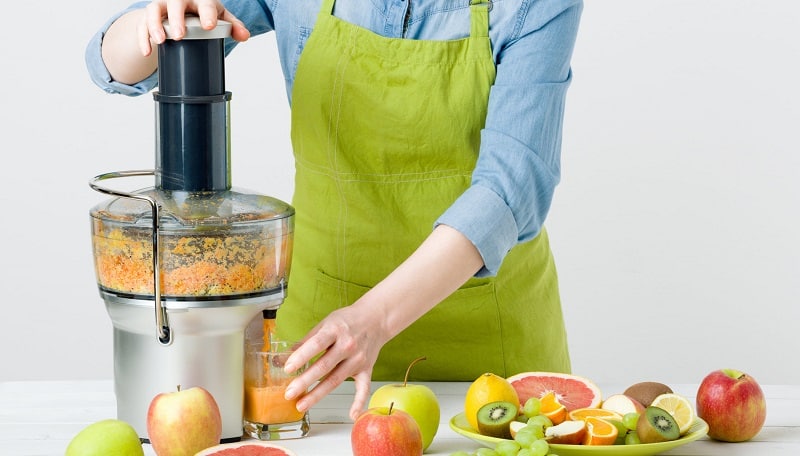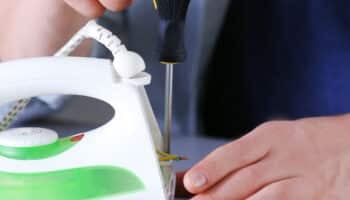Is your juicer not working, and it’s driving you up the wall?
You’re not alone! The issue affects thousands of people worldwide daily, leaving them frustrated and without their vitamins.
If you’ve ever tried to get a freshly squeezed glass of orange juice manually, you know how tedious and effortful it can be, not to mention the mess it leaves all around the kitchen. Thankfully, we have juicers to save the day.
But what happens when your juicer stops working? Many causes could be responsible for the situation. From internal pulp buildup to overheating and overloading, the possibilities are infinite.
But don’t worry; you’ve come to the right place for answers. Below, you’ll find an article with 8 known reasons why your juicer has stopped working and solutions for each one.
Ready? Let’s dive in!
Why Your Juicer Has Stopped Working
Juicers are not complex appliances, but they can sure make us feel confused when they stop working out of the blue.
If your juicer is not working, it could be due to:
- A bad outlet.
- A bad cord.
- Improper assembly.
- Overloading.
- Pulp buildup.
- Overheating.
- A blown fuse.
- A fried circuit board.
#1 You Have a Bad Outlet
If your juicer has stopped working, I first recommend you check the wall outlet it’s plugged into. When your wall outlet fails, the issue can manifest in several ways, such as breaker tripping, short circuits, and a non-working juicer.
I strongly advise against using your juicer when your wall outlet is failing, as it can bring about a lot of issues and damage the appliance.
Solution: Test a different outlet.
To either confirm or rule a bad outlet out as a possibility, you must unplug your juicer and take it to a different section of the house to plug it back into a different outlet. If using a different outlet resolves the issue, mystery solved.
Provided you feel up for a challenge, try testing the suspicious outlet for continuity with a multimeter to rule out other failures in your home’s electrical layout.
#2 Your Power Cord Is Damaged
If testing a different outlet didn’t work, your juicer might have stopped working due to a damaged power cord.
We often fail to pay attention to our appliance’s power cords, as we assume they’re just as sturdy as the appliances themselves, but they’re not. In fact, appliances’ power cords can be easily damaged by keeping them tangled, stored away improperly, or pressed against objects at sharp angles.
In my experience, a damaged power cord can make your juicer stop working and cause short circuits and other issues.

Solution: Try a different power cord.
You probably don’t store power cords for a rainy day like this one, and that’s ok; you can buy one at any online marketplace for cheap. All you need is your juicer’s make and model and some moderate research to ensure you’re buying the right cord.
Alternatively, if you do have a spare cord to test right away, you can follow the steps from the previous point and try operating your juicer with a different power cord on a different outlet.
#3 Your Juicer Is Improperly Assembled
There’s always a chance that your juicer has stopped working due to improper assembly.
If you’re in the habit of cleaning your juicer after every use, good for you! Cleaning and maintenance are some of the best ways to extend any appliance’s lifespan and prevent other problems from arising.
That said, there’s a chance that you might have failed to put your juicer back together correctly during the last cleaning session.
Juicers require freedom of movement, so any part obstructing the appliance’s range of motion is a problem.
Solution: You’ll have to take your juicer apart and carefully reassemble it, ensuring all the pieces sit tightly where they belong.
Tedious, I know – but necessary.
#4 You’re Overloading Your Juicer
Can you overload a juicer? Certainly, it’s actually easier than you think.
If your juicer has stopped working, there’s a chance that you might be juicing batches too large for your particular model.
From what I’ve seen, juicer manufacturers will include a maximum capacity or operation rate in their user manual. Following your manufacturer’s indications is not only advised but mandatory.
Doing otherwise can cause your juicer to stop working and dramatically decrease its lifespan.
Solution: Give your user manual another read-through; you’ll find all the information you need there. If you can’t find the manual, please refer to our free resource below.
If you find yourself frequently preparing several batches of juiced vegetables and fruits for friends and family, you might want to look at juicers with larger capacities.
#5 There’s Pulp Buildup
While you can configure your juicer to keep most, if not all, of a fruit’s pulp away from the final product, juicing isn’t a perfect science, and some residue will always be left behind.

I find that pulp residue’s not problematic if you clean your juicer regularly. However, if you don’t, stringy pieces of pulp (especially from celery) can cause operational issues. Try cleaning your juicer thoroughly after every use.
You can use a toothbrush and a cleaning mixture of water and vinegar in equal parts to scrub the juicer’s basket clean.
Solution: If you’re unsure how to disassemble your juicer, your User Manual should have specific instructions for your model.
#6 Overheating
Overheating could also explain why your juicer stopped working.
Modern juicers are built to be resilient and work efficiently over long periods, but they’re neither perfect nor indestructible. You should always use your juicer carefully and under your manufacturer’s recommendations.
Putting your juicer under excessive stress will cause it to overheat, resulting in malfunction and permanent damage. It’s better to juice small batches in several shorter periods than larger ones quickly.
Remember that any damage to your juicer caused by operating it under abnormal conditions will result in a void warranty.
Solution: Be conscious about how much fruit or vegetables you put in every batch. If you constantly need to prepare large batches quickly, it would be a good idea to look into other, larger juicer models.
#7 You Have a Blown Fuse
If your juicer stopped working and none of the solutions above have fixed the issue, there’s a chance that you have a blown fuse.
Fuses are your juicer’s bodyguard. Whenever fuses detect a potentially harmful power surge coming into your juicer’s circuit board, they “blow”, cutting off all electrical conductivity.
Although a blown fuse is a sign that your juicer’s safety measures are in place, you only have the one. If your fuse has blown, you’ll have to replace it to get your juicer working again.
Solution: Follow the steps below to access your juicer’s fuse:
- Unplug your juicer.
- Turn the juicer upside down to identify the screws at the bottom.
- Once you locate the screws, undo them with a screwdriver.
- Remove the outer lid and expose your juicer’s internal wiring.
- Locate the suspicious fuse and gain comfortable access to it.
- Test the fuse for continuity with your trusty multimeter.
#8 Your Circuit Board Is Fried
Lastly, let’s consider damage to your circuit board when your juicer has stopped working. The circuit board is the lifeblood of your appliance – without the circuit, your juicer cannot function.
Normally, whenever there’s a big power surge, your juicer’s fuse saves the day, and there’s no further damage to the rest of your appliance. However, when the fuse has already blown and there’s another power spike, the circuit board fries.
Solution: If you’re still under warranty coverage, and your manufacturer accepts repairs stemming from external factors such as blackouts or factory defects, you can send your juicer in for repairs. Usually, free of charge.
However, if the damage happened due to overheating, or other abnormal operating conditions, you will not be covered.
In such a case, you’re better off buying a new juicer. A replacement circuit board is not expensive per se, but:
- The cost of labor to replace a circuitry board is significant relative to a new juicer’s price.
- There’s no real guarantee that the juicer will work as well as it used to once repaired.
Fixing a Juicer That’s Stopped Working
When your trusty juicer’s not working, not only are you left without a fresh glass of OJ in the morning, but also put in a position where you need to start troubleshooting.
Luckily, as I hope this piece has helped you better understand, addressing the most common causes behind a juicer that has stopped working is easy and quick. More often than not, something as simple as replacing a fuse and using a different wall outlet will do the trick.
Thanks for reading. If this article was useful, check out our other incredible resources below and consider subscribing to our newsletter.
Happy juicing!
-Craig.








